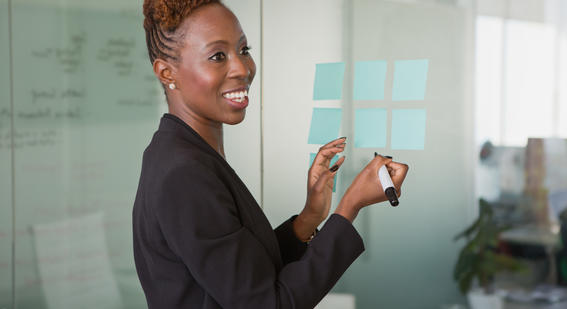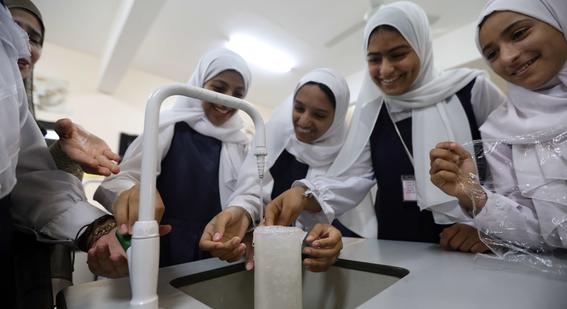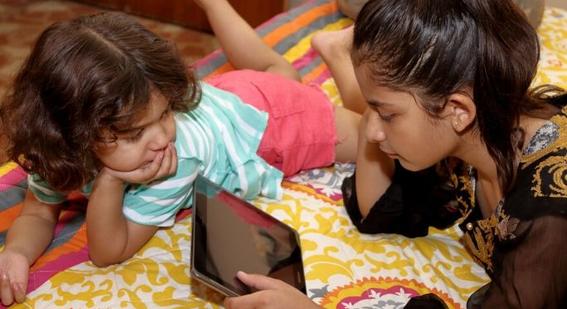World Creativity & Innovation Day: The power of partnerships
Former Global Partnership for Education (GPE) Board and Executive Committee Member Euan Wilmshurst shares his thoughts on the power of partnerships this World Creativity and Innovation Day.
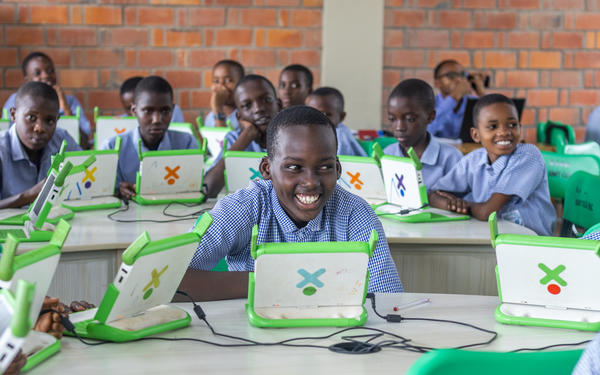
Today, we celebrate World Creativity and Innovation Day, a moment to champion the role of creativity and innovation in addressing global and local economic, social and sustainability challenges. As a senior adviser in the global education sector, I’ve seen first-hand how powerful and innovative partnerships can transform educational landscapes worldwide.
In many parts of the world, access to quality education is uneven, creating a substantial gap. This 'education gap' means that while some enjoy high standards of learning and abundant opportunities, others are left behind. But, by fostering innovation and partnerships, we can bridge these disparities, directly contributing to the Sustainable Development Goals (SDGs), particularly in education.
Partnerships are key for nurturing innovation in education. When diverse entities such as governments, universities and non-profits, and technology firms unite, their collective effort can introduce ground-breaking educational practices. These collaborations are vital in providing creative solutions that can be applied globally to enhance educational access and equity.
As an advocate for global education reform, I've witnessed how strategic partnerships can catalyse significant advancements in education systems worldwide. These collaborations harness collective expertise and resources to tackle educational challenges more effectively.
Enhancing education in Oman through strategic collaboration
In Oman, the government has embarked on an initiative to integrate scientific research skills, innovation, and creativity into the education system. This effort involves a partnership between the Omani government and Cambridge. This strategic alliance aims to develop a knowledge-based economy in Oman, fostering an entrepreneurial mindset that is crucial for the nation's development.
The HP Cambridge Partnership for Education EdTech Fellowship programme: A model of technological empowerment
Another example of effective partnership is the HP Cambridge Partnership for Education EdTech Fellowship, which is a collaboration between HP and Cambridge, supported by several local educational bodies. This programme focuses on accelerating digital transformation in education by helping governments develop the skills, knowledge and networks to embed education technology effectively in their country. The programme empowers local leaders with the expertise they need to drive truly transformative and sustainable changes. By accelerating digital transformation in education, governments and decision-makers can make access to education more equal, ensuring that every student, regardless of their geographical location, has the opportunity to learn and succeed.
Since its launch in 2023, the fellowship has welcomed 40 leaders from 18 countries from sub-Saharan Africa and Gulf regions, equipping them with evidence, tools and insights to drive change in their respective education ecosystems. In sub-Saharan Africa alone, this work will impact more than 200,000 teachers and almost 18 million students over the next five years.
These partnerships are standout examples of how decision-makers from the private and public sectors can work collaboratively and innovatively to bridge the global education gap.
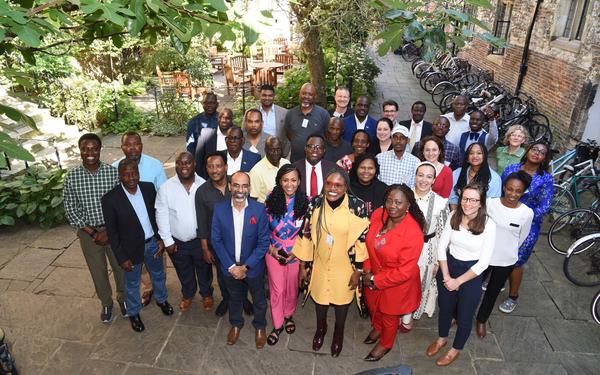
Empowering students to innovate and address global challenges
Today's education needs to do more than just teach basic knowledge. It must inspire students to tackle significant issues like the climate crisis and encourage them to think in innovative ways. Education should develop critical thinking and problem-solving skills to prepare students for future challenges.
The Learning Passport, developed through collaboration between Cambridge, UNICEF, and Microsoft, is a key example of this approach in action. This platform provides accessible educational resources to children affected by crises, allowing them to continue their studies in challenging circumstances and develop key skills such as resilience and adaptability.
UNESCO and Microsoft have also worked together to bring innovative technologies into educational assessments. This partnership focuses on equipping students worldwide with the essential skills to creatively address future challenges, highlighting the need for educational practices that encourage innovation.
Enhancing education access through strategic technology partnerships
Ensuring all students have access to education through technology is crucial for fairness in learning opportunities. Strategic partnerships play a key role in making education available to all, no matter where they are or what their economic situation might be.
The Global Partnership for Education (GPE), working with the World Bank, supports projects that use technology to improve education in developing nations. For example, in Pakistan, they have used radio and television broadcasts to deliver educational content during the COVID-19 pandemic, ensuring students without internet access could continue to learn.
In a similar vein, the Global Schools Forum advocates for the use of technology to enhance education. Their support for projects like Dignitas' LeadNow in Kenya and Sabre Education's Transformational Teacher Training in Ghana shows how technology can improve educational leadership and early childhood education. These efforts demonstrate the significant impact technology can have on enhancing educational quality and accessibility.
Forging a brighter future through creative collaboration
Today, as we recognise World Creativity and Innovation Day, it's clear that the path to overcoming global educational challenges lies through creativity and partnership. The collaborations I have highlighted show how combining strengths from various sectors can significantly advance our progress towards the Sustainable Development Goals, particularly in education.
By enhancing access with digital tools and fostering innovative thinking, these partnerships demonstrate a commitment to making education equitable and accessible to all. Whether through remote learning platforms that reach underserved communities or through curriculums designed to reflect diverse and local perspectives and contexts, these partnerships are crucial in shaping an inclusive educational future.
Innovation in education isn't just about new technologies; it's about thinking differently to solve old problems. This means nurturing an environment where every young person can think creatively, act innovatively, and believe in their potential to make an impact.
As we move forward, let us continue to build on the power of partnerships, drawing on creativity and innovation to bridge the educational divide. It is only through shared commitment and collaborative effort that we can ensure a brighter, more equitable future for all learners.
Euan Wilmshurst is a strategic adviser specialising in external engagement, strategic partnerships and advocacy. With over 30 years of experience, his last executive role was at the LEGO Foundation, where he led advocacy, partner engagement, and external communications for over 3 years.
Through his own consultancy, Euan now provides guidance to corporates and foundations, enhancing their external engagement strategies, and advises a range organisations in the global education sector, including Cambridge, Street Child and Education.org. He serves on the boards of a range of non-profits including STIR Education and Home-Start UK.

